Comments to the offered plants:
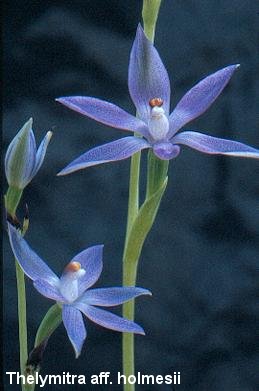
Thelymitra aff. holmesii. Only
know from the Mount Frankland area in Western Australia. Flowering is
fire dependent. The flowers are scented like strawberry jam. To induce
flowering, store dormant tubers together with a green banana in a plastic
bag on a warm, but sun protected place, in late summer. Avoid direct contact
of tubers and banana skin. Ethylene released by the banana promotes flowering.
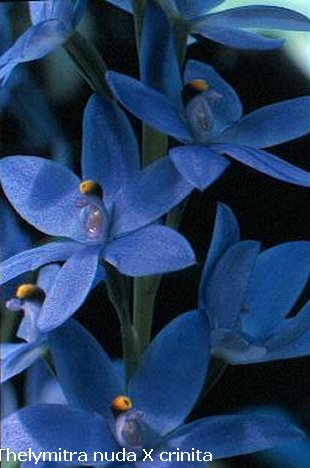
Thelymitra nuda X crinita. Large flowers on tall plants. Spectacular blue, like the clear sky. Mitra with a tuft of fine white to purple hairs. Not to difficult to grow. Frost hardy up to -4°C.

Thelymitra Cinderella. Misses the outstanding beauty of Thelymitra variegata. Never the less, a lovely plant to grow.
Distribution:
More than sixty species, most are endemic to Australia. Some are found in New Zealand and one in the Philippines.
Description:
Flower stems 10 to 100cm high, with a single leaf. Thelymitra
has simple resupinate flowers and the labellum is similar to the petals.
The perianth segments are often brightly coloured. The collumn (mitra)
is prominently winged and most important for differentiating between species.
The flowers open only in warm, sunny weather and are pollinated be small
bees, attracted by scent, colour and collumn adornments.
Culture:
Sun orchids can be very tricky in cultivation. However, most are fairly
amenable and some are very easy. All plants are summer dormant and rest
as tuberoids. Plants emerge in late summer and flower in late winter,
spring and early summer. Culture as sunny as possible. In milder climates
garden culture is possible. Frost hardy up to -5°C. Regular watering during
the growing period is essential. Fertilize monthly with 0.2g/l until flowering.
Reduce watering with the onset of flowers and stop as the leaves die back.
Completely dry during dormancy. Occasionally a light spray of water for
small plants and seedlings to prevent dehydration. If grown inside, move
plants temporary outside in late summer as cool nights and some rain will
stimulate plants into the new growing season.
Recommended potting mixes:
80% Seramis or fine to medium grade Perlite. 20% organic components.
Favourable are fermented or N-impregnated wood shavings or saw dust. (Toresa
has given good results.) No peat. Spagnum moss is suitable. Substrates
have to be well draining with a pH of 5 to 6.
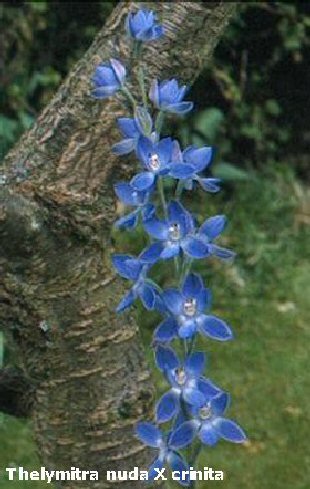
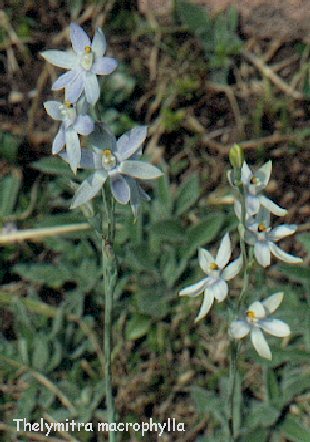 Thelymitra macrophylla. This species is restricted to West-Australia. Produces long leathery leaves. Flowers are similar to T. nuda from Süd-Australien but mainly light blue. The scent is different from T. nuda, too.
Thelymitra macrophylla. This species is restricted to West-Australia. Produces long leathery leaves. Flowers are similar to T. nuda from Süd-Australien but mainly light blue. The scent is different from T. nuda, too.
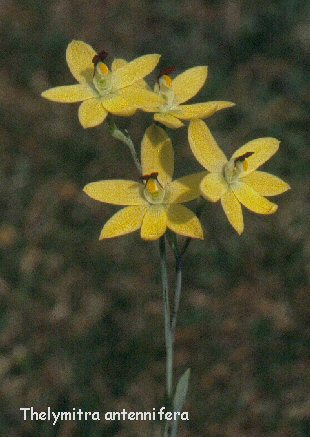
Thelymitra antennifera. Distributed from West-Australia to Tasmania. Seeds originate from West-Australia (Albany). Emits a delicious scent.

Thelymitra X dentata (longifolia X pulchella). Known as a natural hybrid in New-Zealand. This cross was done by Dough McCrae in the nineties using New-Zealand species. Unfortunatelly the plants show a low fertility. However, progeny was obtained by crossing to Thelymitra nuda. In Central Europe T. X dentata flowers in May and June.
Thelymitra Sleeping Beauty. Lovely rose coloured, scented flowers. Parents are Thelymitra nuda and Thelymitra Kay Nesbitt. This sun orchid is very easy to grow. Frost hardy up to -5°C.
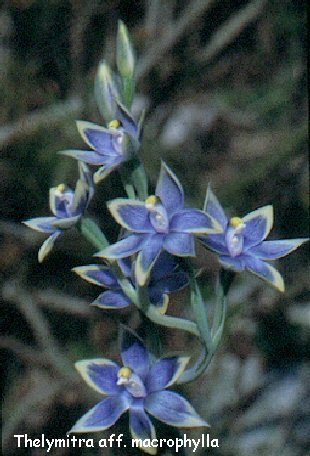
Thelymitra aff. macrophylla. Seeds were obtained by Ron Heberle as T. macrophylla. Possibly the plants are identical to T. aff. holmesii by Hoffman & Brown, 1992 page 267.
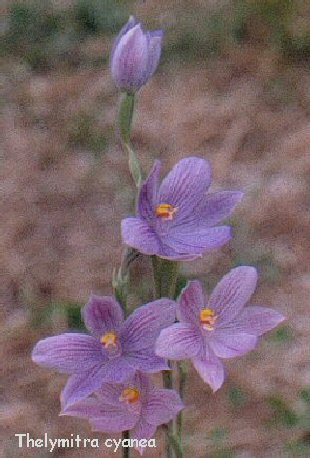
Thelymitra cyanea. This sun orchid needs constantly wet soils. Rests in summer only a few weeks. Planted in the garden new leaves appear befor the old leaves wither. Seeds originated from Tasmania. Plants are fost hardy to -7°C.
Further reading:
Cultivation of Australian native orchids produced by the
Australasian Native Orchid Society, Victorian group Inc. Helen Richards,
Rick Wootton, Rick Datodi.
Orchids of Western Australia produced by the Western Australian
Native Orchid Study and Conservation Group. Kingsley W. Dixon,
Bevan J Buirchell, Margret T. Collins
Native orchids of Australia . David Jones, 1993. Reed, ISBN
0 7301 0189 4.
Orchids of south-west Australia. Noel Hoffmann and Andrew
Brown, 1992. University of Western Australia Press, ISBN 1875560 130.
The Orchids of Victoria. Gary Backhouse and Jeffrey Jeanes, 1996.
Melbourne University Press, Carlton, Victoria. ISBN 584.1509945.
Field Guide to the Orchids of New South Wales and Victoria. Tony
Bishop, 2000. Second edition. University of New South Wales Press. ISBN
0 86840 706 2.